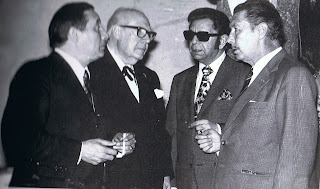Pioneers, Creators and Performers
For three years from 2006, Radio Cultura FM broadcast a weekly program with Fabio Zanon .
After 13 initial episodes dedicated to the series The Spanish Guitar in the Twentieth Century, Fabio focuses on the history of the guitar in Brazil.
This series of 148 programs covers the rich universe of Brazilian guitar. The guitar’s main characters are the protagonists in these programs illustrated with rare recordings and exclusive interviews.
The starting point for this series is the article by Fabio, The guitar in Brazil after Villa-Lobos.
 Unfortunately, you might have to work to get the downloads, but if you succeed, this is a treasure trove of the history of ther guitar in Brazil, featuring most, if not all, the important Brazilian guitarists after Villa Lobos.
Unfortunately, you might have to work to get the downloads, but if you succeed, this is a treasure trove of the history of ther guitar in Brazil, featuring most, if not all, the important Brazilian guitarists after Villa Lobos.
Knowing how to understand Brazilian is definitely a help!







